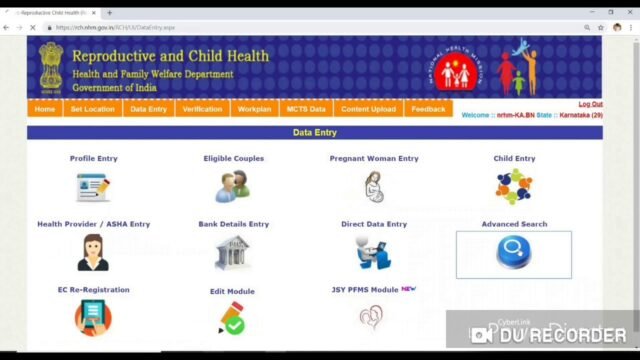India’s health mission has taken major digital strides in recent years, and one of its key initiatives is the RCH Portal. Launched under the National Health Mission (NHM), the Reproductive and Child Health (RCH) Portal is a central platform designed to improve maternal and child health across the country.
This article provides a complete guide to the RCH Portal — what it is, how to log in, features, services offered, and how it benefits healthcare workers and citizens.
What Is the RCH Portal?
The RCH Portal (https://rch.nhm.gov.in) is an online platform developed by the Ministry of Health and Family Welfare, Government of India. It aims to track and manage reproductive, maternal, newborn, child, and adolescent health data through digital means.
This portal supports:
- Pregnant women registration and tracking
- Child immunization records
- Family planning services
- High-risk pregnancy identification
- Health worker performance monitoring
Objectives of the RCH Portal
The main goals of the RCH Portal are:
- Reducing maternal and child mortality
- Providing real-time data for health interventions
- Supporting frontline workers (ASHAs, ANMs, etc.)
- Monitoring health program effectiveness
- Improving service delivery across rural and urban areas
RCH Portal Login Process
To access services, authorized health workers and government officials can log in as follows:
- Visit the official portal: https://rch.nhm.gov.in
- Click on the “Data Entry” section
- Choose your state or union territory
- Enter your username and password provided by your health department
- Click Login to access the dashboard
🔒 Note: General public users don’t require login to access public data or information; only data entry users like ANMs and MOICs require login credentials.
Key Features of the RCH Portal
Here’s what users can do through the RCH portal:
1. Pregnancy Registration
Health workers can register expectant mothers, track antenatal checkups, due dates, and risks.
2. Child Health Services
Track birth details, immunization schedules, growth milestones, and nutrition data.
3. Family Planning
Monitor contraceptive usage, counseling sessions, sterilization, and spacing services.
4. Reports & Dashboards
District- and block-level health data reports help policymakers and officials monitor progress.
5. Data Entry for Field Workers
ASHAs, ANMs, and other field workers can input real-time health data directly via mobile or desktop.
RCH Mobile App
The RCH App is available for Android devices and can be used by health workers for on-the-go data entry. Key features include:
- ANC (Antenatal Care) visit tracking
- Immunization status update
- Family planning record update
- Quick beneficiary search
RCH Portal vs. MCTS Portal
The RCH Portal is the advanced version of the Mother and Child Tracking System (MCTS). While MCTS mainly recorded data, RCH enables:
- Better accuracy with Aadhaar linking
- Geo-tagged tracking
- More detailed beneficiary profiling
- Greater integration with national health databases
Benefits of the RCH Portal
- Improved maternal and child health outcomes
- Efficient resource allocation through accurate data
- Early identification of high-risk pregnancies
- Better monitoring of vaccinations and immunization drives
- Paperless workflow for field health workers
RCH Portal Help & Support
- Official website: https://rch.nhm.gov.in
- Support Email: info@nhm.gov.in
- State health departments provide user credentials and technical help
Final Thoughts
The RCH Portal is a powerful digital tool for improving maternal and child health outcomes in India. With features like real-time tracking, performance dashboards, and mobile support, it empowers frontline health workers and boosts healthcare access in rural areas.
Whether you’re a health professional or simply interested in how technology is transforming public health, the RCH Portal stands as a model of innovation under India’s Digital Health Mission.







